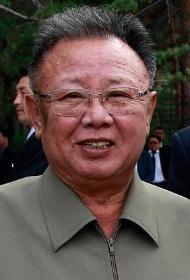谁和成蕙琳约会过?
Kim Jong-il 日期为 成蕙琳,从 到 . 年龄差距为 4 年 0 个月零 23 天.
成蕙琳
成蕙琳(朝鮮語:성혜림,1937年1月24日—2002年5月18日)是北韓電影演員,被视为朝鲜最高領袖金正日的第二任妻子。成蕙琳生於日治朝鮮慶尚南道昌寧郡,成有慶的二女,由於其父信仰共產主義而在二戰後至韓戰間從南韓遷往北韓,其母是北韓官方報刊《勞動新聞》的編輯。後畢業於平壤話劇電影大學。
她的首任丈夫名為李平,是一位學者,兩人育有一對兒女。1968年,金正日登上白頭山時,和同學的大嫂成蕙琳相遇,頓時被她迷住。1970年10月,金正日與元配洪一天離婚,強迫李平與成蕙琳離婚,並與她開始同居,李平跳大同江自杀。不過,金日成反對這段婚姻,認為電影明星不適合於「第一家庭」,加上成蕙琳曾經結婚和有子女,而且她來自南韓,社會關係複雜,年齡又比金正日大六歲,並不適合他。
1970年代中期,金正日在父親金日成舉辦的晚會上,見到比他小11歲的演員高容姬,迅即被她吸引,從此冷落成蕙琳。自此,成蕙琳健康惡化;1980年代時,她前往莫斯科就医。1996年,她的外甥李漢英协助成蕙琅脱北,期间亦有传闻她叛逃,朝鲜官方隨後否認。
报道指成蕙琳于2002年5月18日去世,據報病死於莫斯科。
阅读全文...Kim Jong-il

Kim Jong Il (born Yuri Kim; 16 February 1941 or 1942 – 17 December 2011) was a North Korean politician and dictator who was the second supreme leader of North Korea from the death of his father Kim Il Sung in 1994 until his death in 2011. Posthumously, Kim Jong Il was declared Eternal General Secretary of the Workers' Party of Korea (WPK).
In the early 1980s, Kim had become the heir apparent for the leadership of North Korea, thus being established the Kim family, and he assumed important posts in party and army organizations. Kim succeeded his father and founder of North Korea, Kim Il Sung, following his death in 1994. Kim was the General Secretary of the WPK, WPK Presidium, WPK Central Military Commission, Chairman of the National Defence Commission (NDC) of North Korea and the Supreme Commander of the Korean People's Army (KPA), the fourth-largest standing army in the world.
Kim ruled North Korea as a repressive and totalitarian dictatorship. Kim assumed leadership during a period of catastrophic economic crisis amidst the dissolution of the Soviet Union, on which it was heavily dependent for trade in food and other supplies, which brought a famine. While the famine had ended by the late 1990s, food scarcity continued to be a problem throughout his tenure. Kim strengthened the role of the military by his Songun ("military-first") policies, making the army the central organizer of civil society. Kim's rule also saw tentative economic reforms, including the opening of the Kaesong Industrial Park in 2003. Under his leadership, North Korea conducted its first nuclear test in October 2006, obtaining nuclear weapons. In April 2009, North Korea's constitution was amended to refer to him and his successors as the "supreme leader of the DPRK".
The most common colloquial title given to Kim during his lifetime was "Dear Leader" to distinguish him from his father Kim Il Sung, the "Great Leader". Following Kim's failure to appear at important public events in 2008, foreign observers assumed that Kim had either fallen seriously ill or died. On 19 December 2011, the North Korean government announced that he had died two days earlier, whereupon his third son, Kim Jong Un, was promoted to a senior position in the ruling WPK and succeeded him. After his death, alongside "Eternal General Secretary" of the WPK, Kim Jong Il was declared "Eternal Chairman" of the now defunct National Defence Commission, in keeping with the tradition of establishing eternal posts for the dead members of the Kim dynasty. North Korean media also began referring to Kim as "the General" (장군 Changgun), similar to his father's posthumous designation as "the [eternal] President".
阅读全文...